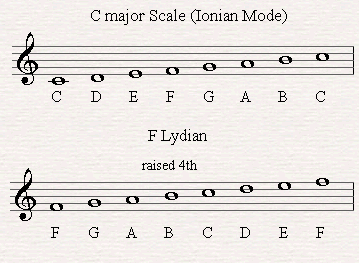Fascination About Lydian Boschman – Postdoctoral researcher, ETH Zürich


Lydian mode in all keys for treble clef
Fascination About Lydian mode - Wikipedia
The modern-day Lydian mode is a seven-tone musical scale formed from an increasing pattern of pitches making up 3 whole tones, a semitone, two more entire tones, and a last semitone. Since of the value of the major scale in modern music, the Lydian mode is typically referred to as the scale that begins on the 4th scale degree of the significant scale, or additionally, as the major scale with the 4th scale degree raised half an action.
The use of the B instead of B would have made such piece in the modern F major scale. Ancient Greek Lydian [edit] The name Lydian describes the ancient kingdom of Lydia in Anatolia. In Greek music theory, there was a Lydian scale or "octave species" extending from parhypate hypaton to routine diezeugmenon, equivalent in the diatonic genus to the modern-day Ionian mode (the major scale).

Melodic minor modes - Lydian Augmented - Andy French's Musical Explorations
Middle ages Lydian mode [modify] In the Middle Ages and Renaissance, this mode was explained in two ways. The very first method is the diatonic octave types from F approximately F an octave above, divided at C to produce two sections: The second is as a mode with a last on F and an ambitus encompassing F an octave higher and in which the note C was considered having an essential melodic function.

Excitement About Lydian - Counter Weight Brewing Co- Untappd
Modern Lydian mode [modify] The Lydian scale can be explained as a significant scale with the 4th scale degree raised a semitone, making it an augmented fourth above the tonic, e. g., an F-major scale with a B rather than B. This mode's enhanced 4th and the Locrian mode's diminished fifth are the only modes to have a tritone above the tonic.

lydian -mode-on-treble-clef.png" alt="A Major Lydian Mode"/>Lydian Chord Progression – How To Play In Lydian? [2021]
The subdominant is diminished. The triads constructed on the remaining 3 scale degrees are small. Noteworthy structures in the Lydian mode [edit] Classical (Ancient Greek) [modify] The Paean and Prosodion to the God, familiarly called the Second Delphic Hymn, made up in 128 BC by Athnaios Athenaou is predominantly in the Lydian tonos, both diatonic and chromatic, with areas likewise in Hypolydian.
